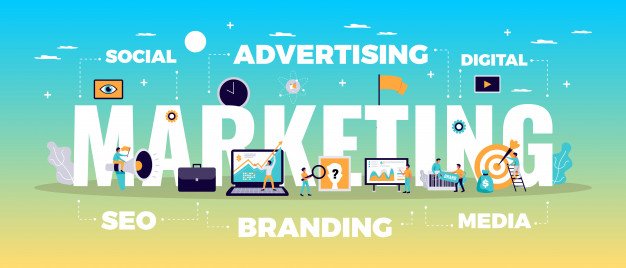Marketing is an integral part of any business. It is the bridge that connects consumers to products. You want consumers to purchase from you and trust your company as a business owner. So, you can undermine the value of good publicity for your company.
Globally, companies are willing to spend trillions of dollars to work on their marketing plan, including working on witty commercials, socially aware campaigns, and even constructing a user-friendly website convenient for consumers. Therefore, digitalization in marketing is no less than an asset for any flourishing business.
This digitization brings profitability and visibility and helps your business grow in exchange for minimal effort. But the perks of going online don’t end here. Buckle up and learn more about the advantages digitalization in marketing has brought.
5 Noticeable Benefits of Digitalization in Marketing
1. Accessible Digital Tools
There was a time when putting up an advertisement was tedious. You had to make several stops along the way to find a reliable advertising company, think of a catchy billboard sign, and negotiate a price.
This task was also risky since you get one shot to run a proper advertisement in exchange for a handsome price. In addition, if your commercial contained a mistake or a typing error, it would cost an additional fee to get that corrected.
However, in the age of digitization, you no longer have to deal with this to spread the word about your business. Platforms like the DigitalSupermarket have all the digitalization in marketing packages you need to create and manage great online advertisements.
So whether you’re looking for ways to upgrade your SEO, build your content, or need a nifty tool to make your company popular in social spaces, you can find them here. By browsing through the different prices, you can match with a platform that goes nicely with your budget and get to work right away.
2. Saves You Money
As a business, you want to save every penny running your business. That is because maintaining a company is expensive. To have a flexible budget, you need some cash in hand. Therefore by relying on types of digital marketing, you get an opportunity to save money by choosing cost-effective ads.
For instance, while opting for a pay-per-click advertisement, you can choose from spending less than $500 or staying within $1,000 to determine the number of ads you need and how frequently they should target consumers.
Alternatively, social media marketing also offers minimal costs. You may need to spend a small amount to use applications to schedule your posts online and create a social media campaign, but you don’t need to break the bank.
By going on Twitter, Facebook, or Instagram, you can quickly post content about your company and display products by going on Instagram live or Twitter to tweet more about your business by sharing relatable hashtags.
Saving money allows you to spread your wings, continue posting quality content, and use your money to work on other projects. So now you’re no longer obliged to spend thousands of dollars to make your company visible and expand.
Related guide: Importance of Storytelling in Social Media Marketing
3. Let’s You Cultivate Consumer Trust
A customer trusts any company based on two factors. One is that the business produces quality goods, and two, the company makes an effort to connect with them.
Your culturally sensitive ads will work only for a short time if you only produce conventional ads but don’t bother keeping in touch with your consumers. You need to make customers feel important and feel as if they’re essential to your business.
Therefore, through marketing techniques like personalized emails and introducing loyalty points, you can build an understanding with your client.
Digital marketing analysis also allows you to check on your consumer’s habits, so when you’re curating an email for them, you know what their favorite products are and reference them in the mail. This makes the email relatable and shows the customer how much you care about their choices instead of sending a generic happy holiday greeting card.
Try to put consumers with similar purchasing habits into one subscriber list to generate leads and offer the same seasonal discounts. Loyalty cards are another great way to ensure you’re keeping tabs on your clients.
By asking your consumer base to subscribe to your business and provide their details, you can create unique digital cards which redeem loyalty points. With every purchase, a consumer gets points which should give them access to gifts, free samples, and deals encouraging them to buy from you more.
4. Allows You To Compete On A Wide Scale
Whether you’re a small business or a large booming industry, you can compete with anyone, anytime, by using digital marketing. Online spaces work differently.
To gain an edge over your competitor, you need to know how to make content, build SEO, make sure your website is easy to follow, and follow hot trends. These include creating a tik to video or donating to social causes.
When you’re online, the size of your office, number of employees, and duration of your business are meaningless. It all falls to where you rank on the search engine results, the consumers you attract, and how smart you are in utilizing keywords in your content.
Once you manage your business online, you can quickly build a reputation and even earn a high net worth. Therefore, get used to digital marketing if you’re trying to make a name for yourself without going overboard with spending an exuberant amount.
Related guide: What Is The Future Of Digital Marketing In Regards To Shaping Up Small And Large Businesses?
5. Your Progress Is Measurable
Tracking how well you did with your marketing campaign is imperative since you want to know whether you got a high turnover rate or not. Unlike traditional billboards, where you can’t track the number of views, digital marketing comes with metrics.
Tools like google analytics provide you with an optimal breakdown of your marketing tactic. For example, you can see the number of comments, likes, shares, and even purchases your business got. This can help you make a graph and deduce what marketing tactics benefit you every year and what month always gets you new leads.
For instance, you may notice that your products sell well during the holidays, and your social media posts also get shared more around the same time. So you can study what aspects of your campaign spoke to consumers around that period.
As a result, you will have a better idea of what you need to do for your company. When you learn about the return on investment your campaigns generated, it helps you map out new plans, work on your SEO, and discard methods that don’t yield results, saving you more money. You flourish when you’re no longer in the dark about how well you’re doing as a business.
Final Thoughts
Digitalization in marketing has taken the world of business by storm. It has brought benefits that traditional marketing can no longer compete with. By going online, you can find your consumers, get their trust, become visible, get ahead of your competition with no fear and ultimately gauge where your business stands.
There is nothing better than enabling your organization to find a stable footing in the marketing sector as a business owner. In addition, digitalization in marketing also pulls back costs. It helps you design a budget that prevents your company funds from getting drained. So instead of spending thousands of dollars on marketing with a few hundred bucks or at most less than $5,000, you have a strong campaign ready for launch.
Read Also:



























